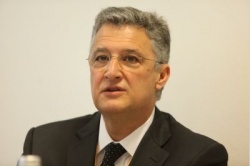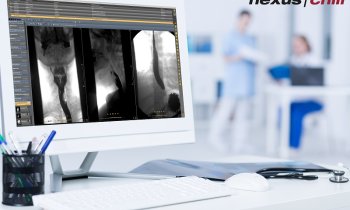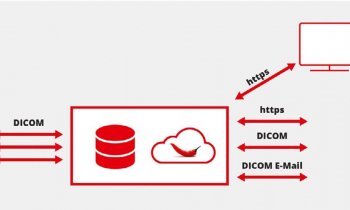ESR: "Teleradiology is a medical act"
Report: John Brosky
After years of promise, with no progress, e-health is gaining ground in Europe, where governments see the potential for cost reductions and productivity gains in telemedicine, regarding it as a magic formula to fix overstretched healthcare systems, and the European Commission (EC) is aggressively pushing tele-anything in healthcare to drive what it sees as a potential for job creation and economic growth.

Among the cheering for the growth of e-health, the European Society of Radiology (ESR) recently raised its voice to reassert the role of the clinician in the brave new world of click-and-send medicine. ‘Teleradiology is a reality; it is here to stay and it is going to expand,’ ESR president Christian Herold MD told European Hospital Correspondent John Brosky. ‘Yet this action should not be seen as the provision of a healthcare service, but as the delivery of medicine through the use of ICT. Teleradiology was first embraced for economic reasons, and the ESR has quite a different view, seeing it as a medical act that needs to have quality and care standards associated with it.’ In a campaign aimed at restoring a medical view of tele-medicine, over the past year ESR has issued position papers on telemedicine and participated in policy discussion in Brussels with the EC.
Luis Donoso MD is a member of the Executive Council of the ESR and the point man in the society’s campaign on e-health. Also the head of radiology services at the Hospital Clinic of Barcelona, Dr Donoso said the ESR distinguishes carefully between telemonitoring of patients at a distance on the one hand and teleradiology on the other. ‘Teleradiology,’ he said, ‘is not equivalent to tele-reporting radiological images, but it is a medical act in its own right.’
There are key differences between these two telemedical practices, Dr Donoso underlined, saying teleradiology is an expansion of a well-established medical practice with the secure transmission on a telematic network of acquired images and their remote interpretation. ‘We would like to emphasise that the medical act is not only a report but includes evaluation of examination requests, selection of the most appropriate imaging strategy, optimisation of the examination performance, customisation of the imaging protocol, and integration of imaging and medical information into the report.’ Published studies proposing that telemedicine activity increases efficiency and economics refer mainly to telemonitoring projects, according to the society. ‘Cost savings for teleradiology cannot come at the expense of quality care and patient safety,’ Dr Donoso said.
Drawing a hard line in the sand on teleradiology, he delivered ESR’s core position: ‘The quality of care to the patients is improved only when teleradiology makes available a remote radiologist in cases when there is not a radiologist available at the site or a local radiologist is easily available. If a doctor based in Belgium provides a report in the UK, he or she must have the proper accreditation to do so in the UK,’ he explained.’ There must be an agreement between the local radiologist and the teleradiologist, and the regulation of teleradiology should be the responsibility of the member state where the patient undergoes the imaging procedure.’
This core position of anchoring accountability to the site of image origin is central to ESR’s insistence on a legal framework and to draw boundaries around the growing trend toward ‘ghosting radiology,’ or outsourcing to distant centres for second opinions and reading of routine exams. ‘The problems with ghosting is not economic but ethical, as illustrated by the case of one company that signed off on hundreds of radiology exams that the contracting firm had never reviewed,’ he pointed out.
According to Dr Herold, the ESR is not trying to insert a gatekeeper system into the radiology chain but to reassert a fundamental need for proper guidelines, an appreciation for quality evaluations and a concern for patient rights.
14.05.2010









